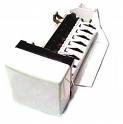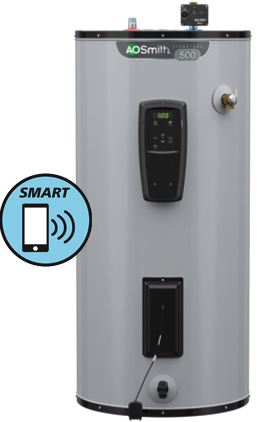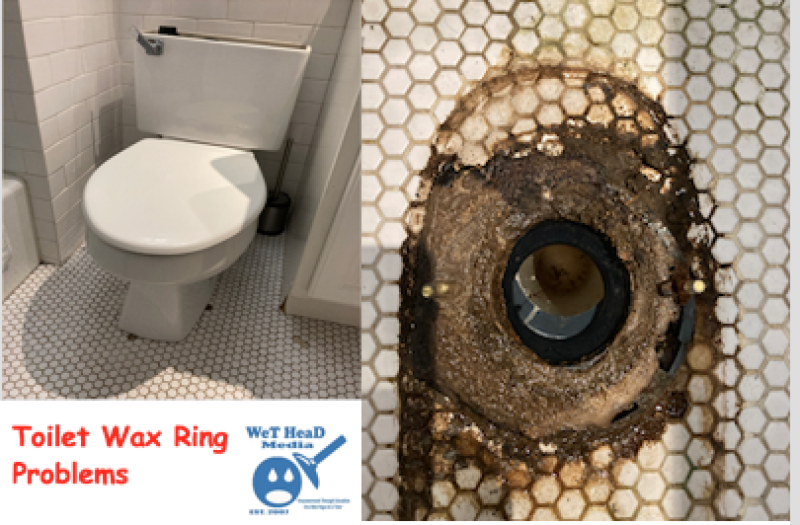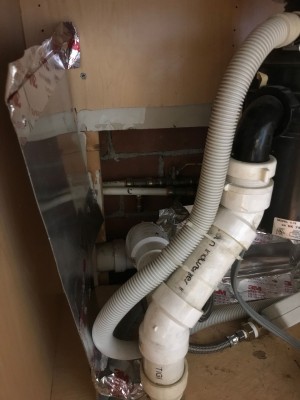Ice Maker Installation & Troubleshooting Guide
The standard ice maker kit that you can find at your local plumbing supply, hardware store or big box store usually will contain everything you will need to hook up your ice maker unless the manufacturer recommends you do not use a saddle valve and then you will want to make sure that you also buy an angle stop supply valve with the ice maker kit. You can also hire a professional licensed plumber in your area to hook up the ice maker kit for you if you are not that handy.
The basic ice maker kit will include the saddle valve, the roll of ice maker line which may be copper, plastic or even a heavy duty braided line. The ice maker kit will also contain a metal feral if the line is plastic so you can connect the line to an angle stop if need be. This ice maker kit usually costs between $12.00 – $27.00 depending on where you buy it and what type of water line tubing has been included. A copper water line ice maker kit will be more expensive then the ice maker kit that comes with the plastic line. You can also shop around at your local Walmart to see if they carry an ice maker kit as well.
How To Install An Ice Maker Line
Before you can install your ice maker line and ice maker kit you will need a few basic hand tools. You will need a Flathead screwdriver to attach the saddle valve to the water line. You will also need an adjustable wrench to attach and tighten the water line to the ice maker, refrigerator and to the saddle valve.
The first thing you will want to do is to find a spot where you will be attaching your saddle valve. Once you have located a spot for your saddle valve you will want to clamp the saddle valve onto the pipe but do not force the pin / needle though the pipe at this point. Now that you have the saddle valve attached to the water pipe you can attach the water tubing ice maker line to the back of the ice maker and then connect the other end to the saddle valve. Once you have both end of the water line attached you will want to tighten them with the adjustable wrench.

Once you have the saddle valve attached to the water cold water pipe and the ice making tubing water line hooked up and tightened to both the ice maker and the saddle valve you can now pierce the water line with the saddle valve needle. What you will want to do is to turn the T-handle on the needle valve until the pin pierces a hole through your water line and then you will want to turn the T-handle counter clockwise. Once you do so you will have water feeding the ice maker line. If you need to shut the ice maker saddle valve off you can turn the T-handle clockwise until tight and that will stop the water flow to the ice maker line.
Saddle Valve Vs Angle Stop Ice Maker Water Supply Valve
There are two different styles of valves you can use to hook up an ice maker. You can use a saddle needle pin valve or you can use an angle stop water supply valve. There is a big difference in these two types of valves. The saddle valve clamps onto a pipe and then uses a strong sharp needle to penetrate the pipe. The angle stop water supply valve will get connected with a fitting to the existing water lines.
The saddle valve will reduce down the water pressure that is feed into the ice maker line because the needle that feeds the saddle valve has a very small opening. The angle stop valve connects to a water line with a fitting so you will be able to pass that same water pressure into the ice maker line. Many manufacturers recommend that you use an angle stop supply valve instead of a saddle valve for this very reason.
If you have a Frigidaire ice maker it is recommend that you do not use a saddle valve but instead use a angle stop or a valve that is directly tied into the domestic cold water line of the house. If you use a saddle valve for this type of ice maker your ice maker will not work. The saddle valve does not have enough water flow and pressure to allow the ice maker to work properly. There are also a few other brands of ice makers and portable ice maker manufacturers that instruct you not to use a saddle valve right in the instruction manual that came with the appliance.
How To Replace The Ice Maker Line
If you need to replace the ice maker water line or tubing you can do so in a few steps. You will need an adjustable wrench to remove the old water line from the saddle valve / angle stop and also to remove it from the ice maker. The first thing you will want to do before you replace the ice maker line is to shut the water supply valve off that supplies the ice maker line. Once you have the water off you can take your open end or crescent wrench and remove the ice maker line from the saddle valve and then from the ice maker.
Now that you have the old ice maker tubing removed from the saddle valve / angle stop and also the ice maker you can take your new ice maker tubing and connect it to the ice maker and the water supply valve. Once you have both ends connected you can tighten them back down with your open end wrench.
Once everything is tightened down and hooked up you can turn the water back on to the ice maker. Once the water is turned back on you can now check the connections on the saddle valve and also the ice maker for leaks. If you find any leaks you will want to repair them right away. Sometimes you just have to tighten the connections a bit more. Always be sure to shut the water off before tightening or loosening any water line connections.
How To Select The Right Ice Maker Water Tubing
There are three different types of ice maker tubing you can buy. You can buy the ice maker in copper, plastic or even with a braided hose. You should always be sure you check your local plumbing codes before you install or replace an ice maker line to be sure you are using the right materials. You can also ask the local plumbing supply house for their suggestions when you are buying the ice maker kit.
Help My Ice Maker Does Not Work – Troubleshooting The Ice Maker
There are a number of things that can cause your ice maker not to work. Some of these things include frozen water supply lines, weak water pressure and sometimes even a bad valve. You can try to figure out what is wrong with your ice maker by doing something called ice maker troubleshooting. When you troubleshoot your ice maker you will need a crescent wrench and also a Flathead screw driver. You also may need some additional parts if you do find something wrong with the ice maker.
Make Sure To Check For Frozen Ice Maker Line
If your ice maker has just stopped working you may want to check to make sure that the water supply line is not frozen. Sometimes the water supply line that feeds the ice maker unit that is connect to the ice maker solenoid valve may freeze and then the ice maker unit will no longer make ice. You will need to defrost this line before the ice maker will work again.
Make Sure To Check Ice Maker Water Supply Pressure
If you have just installed an ice maker and use d a saddle valve and your ice maker is not working or producing ice you may have to call a plumber to install a standard angle stop supply valve. Most ice maker manufacturers will require you to use a full port valve instead of a needle style saddle valve. The saddle valve has a needle that the water has to pass through before entering the ice maker tubing and this can cause an water flow restriction. This is why its always better to use a angle stop valve.
Make Sure To Check Ice Maker Arm Position
The ice maker arm has two positions that it can be in. When the ice maker arm is up the ice maker is considered off. When the ice maker arm is in the down position the ice maker is ready for use. So if you have just installed an ice maker in your fridge you will want to make sure that the ice maker arm is in the right position other wise your ice maker will not turn on and produce ice.
Using Ice Maker Charts & Diagrams
If you need additional help repairing your ice maker you can use the diagram that came with the unit to explain how to work on the unit further. If you have tried all the basic ice maker “troubleshooting” options and your ice maker still does not work, you may want to call a professional plumber or appliance technician.




My ice maker is working much slower than usual.what controls on the frigidare icemaker speeds up the process of the icemaker? I did not receive a diagram with the icemaker. Thank you
Sincerely
Eugene Smith
i have a frigidare refrigerater water leeks from the filter but i cant get ice